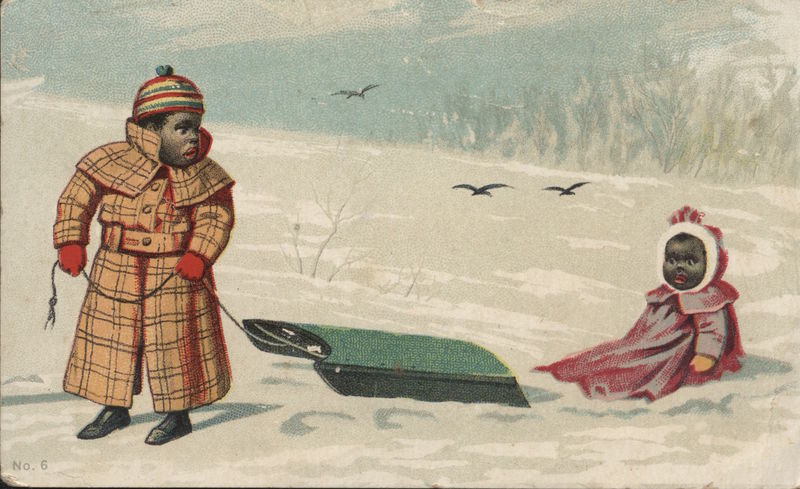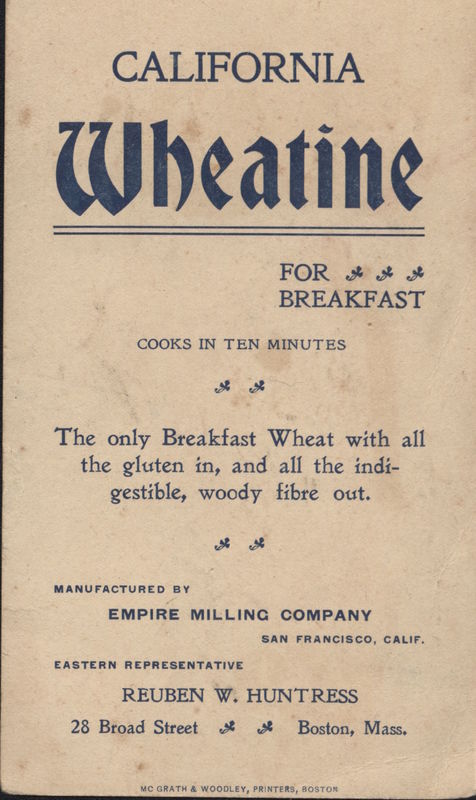2. Educating Racism
The series of advertising cards distributed by the Arbuckle Bros. Coffee Company of New York is an excellent example of this forthright method These fifty cards, each representing one state or territory of the U.S., cast themselves as “instructive” studies, “object lessons for both young and old,” because they provided the coffee consumer or card collector with general information about a specific area of the country, mainly through images.
The card providing instruction on the state of Georgia, for example, listed its current population and area but also showed an image of African Americans picking corn in a vast field . The woman in the foreground has a smile on her face and a wide-brimmed straw hat on her head, the lesson perhaps being that the weather in Georgia is warm but the productive corn picker is content. Finally, a rendering of yellow pines on the far right gave an impression of what the Georgian hinterland might have looked like at the time and a context for contemporary discussions surrounding the state.
In spite of the common usage of supposed black dialect in the popular press and advertising trade cards like these, African Americans themselves found no semblance between such captions and the language they spoke. Hence, constant exposure to imagined black vernacular among children would have worked to instill a belief in inherent African American ignorance. Without any contradiction, whether in the form of images or actual contact with black people,children would have been feebly able to imagine black people any other way.
The difference between the two: there is nothing about the African American woman’s appearance that is exceptionally vulgar in comparison to the others. Instead, it is her words. THIS IS SEEN A LOT. In my opinion it is a more subtle way to educate predjudice. Both trade cards offer unfortunate depictions of African American's, but the one on the left might be chosen to be kept over the one on the right because it is less aesthtically aggressive. Once held as a possession the trade card is able to be viewed inifinitly
As children learned the lessons of consumerism through their interactions with advertising trade cards and the images located on them, so too did they become acquainted with the language of race.
This trade card shows the common trope of the picanninny. The picaninny is an anti-Black caricature of children. They are "child coons," with the same physical characteristics. Pickaninnies have bulging eyes, big red lips, and they speak in a primitive, stereotypical dialect. They are often shown stuffing their wide mouths with watermelon or chicken, which they usually stole. They are unkempt, suggesting that their parents are neglectful.
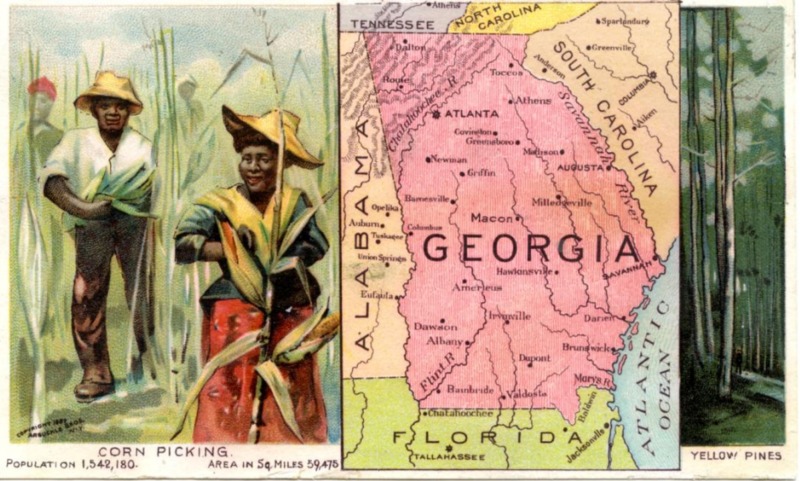
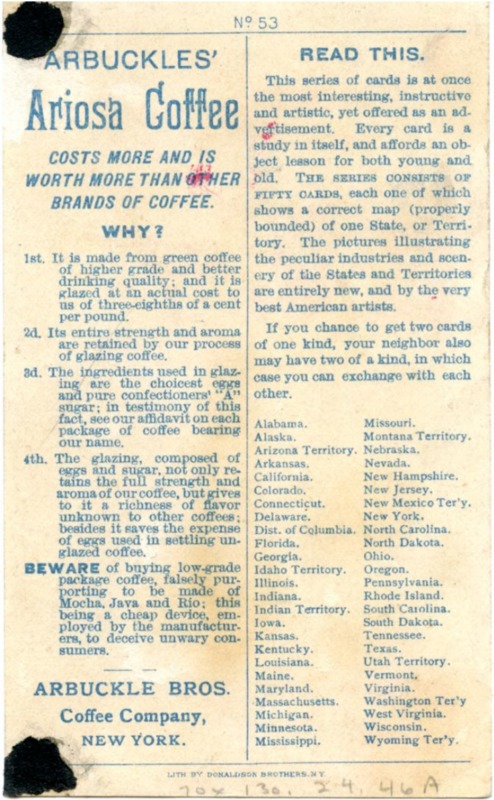
![[Untitled] [Untitled]](https://ds-omeka.haverford.edu/materiality-and-spectacle-2015/files/fullsize/a9a8bae60978125ca66be0ec5405feb4.jpg)
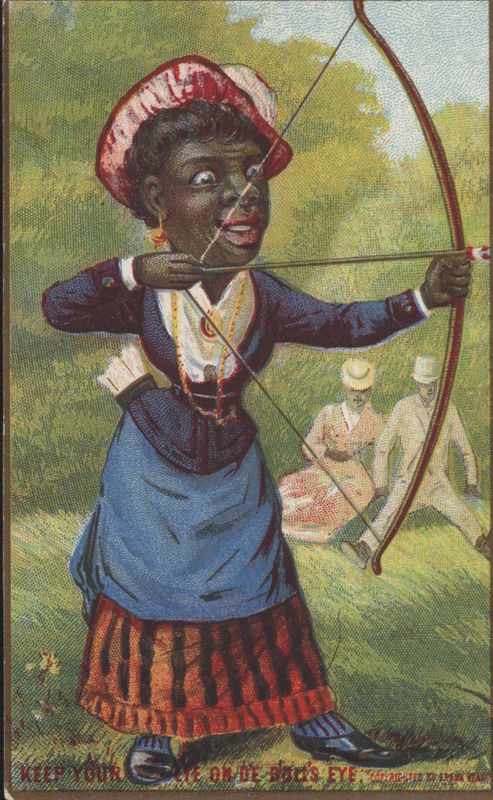
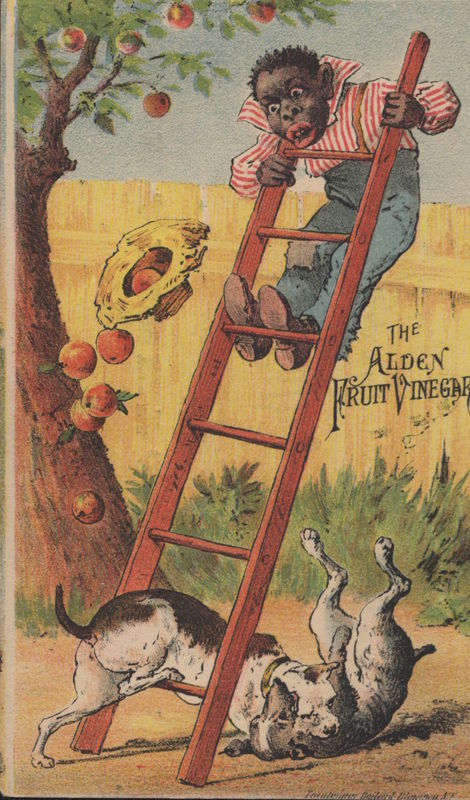

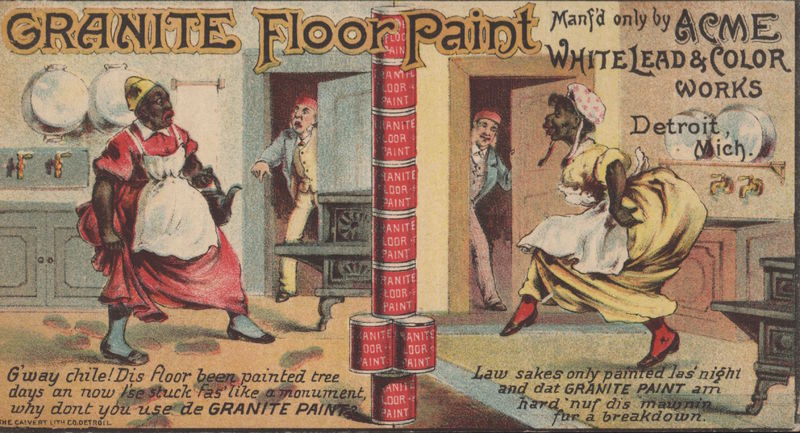
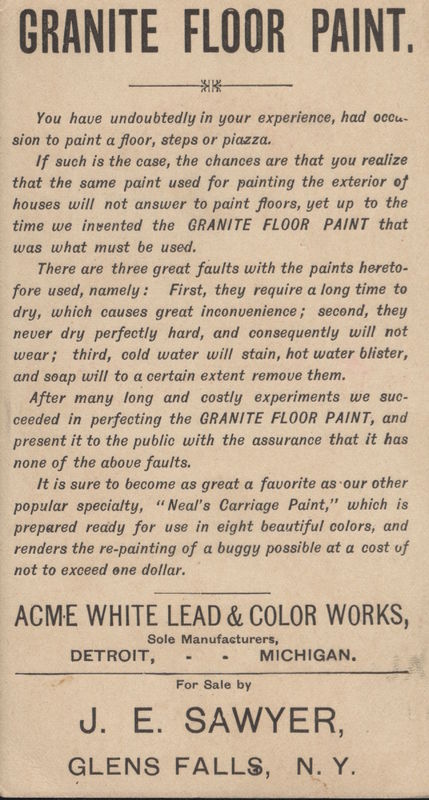


![[Untitled] [Untitled]](https://ds-omeka.haverford.edu/materiality-and-spectacle-2015/files/fullsize/44a3df4991b4f9451578564a4eb9033a.jpg)
